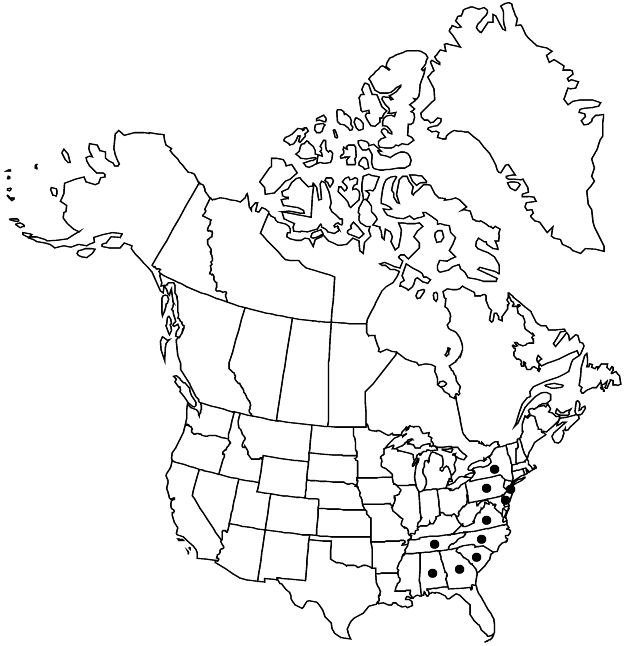Difference between revisions of "Hypericum denticulatum"
Fl. Carol., 190. 1788.
FNA>Volume Importer |
imported>Volume Importer |
||
| (6 intermediate revisions by 2 users not shown) | |||
| Line 13: | Line 13: | ||
}}{{Treatment/ID/Special_status | }}{{Treatment/ID/Special_status | ||
|code=F | |code=F | ||
| − | |label= | + | |label=Illustrated |
}} | }} | ||
|basionyms= | |basionyms= | ||
| Line 19: | Line 19: | ||
|name=Hypericum angulosum | |name=Hypericum angulosum | ||
|authority=Michaux ex Willdenow | |authority=Michaux ex Willdenow | ||
| − | }}{{Treatment/ID/Synonym | + | |rank=species |
| + | }} {{Treatment/ID/Synonym | ||
|name=H. denticulatum var. ovalifolium | |name=H. denticulatum var. ovalifolium | ||
|authority=(Britton) S. F. Blake | |authority=(Britton) S. F. Blake | ||
| − | }}{{Treatment/ID/Synonym | + | |rank=variety |
| + | }} {{Treatment/ID/Synonym | ||
|name=H. laevigatum | |name=H. laevigatum | ||
|authority=Lamarck | |authority=Lamarck | ||
| − | }}{{Treatment/ID/Synonym | + | |rank=species |
| + | }} {{Treatment/ID/Synonym | ||
|name=H. virgatum var. ovalifolium | |name=H. virgatum var. ovalifolium | ||
|authority=Britton | |authority=Britton | ||
| + | |rank=variety | ||
}} | }} | ||
|hierarchy=Hypericaceae;Hypericum;Hypericum sect. Brathys;Hypericum denticulatum | |hierarchy=Hypericaceae;Hypericum;Hypericum sect. Brathys;Hypericum denticulatum | ||
| Line 43: | Line 47: | ||
|elevation=0–400 m | |elevation=0–400 m | ||
|distribution=Ala.;Del.;Ga.;N.J.;N.Y.;N.C.;Pa.;S.C.;Tenn.;Va. | |distribution=Ala.;Del.;Ga.;N.J.;N.Y.;N.C.;Pa.;S.C.;Tenn.;Va. | ||
| − | |discussion=<p>D. H. Webb (1980) regarded the disjunct populations in North Carolina and Tennessee as possible relicts and the Alabama one as due to recent introduction. J. R. Allison (2011) agreed and, in his opinion, the Pennsylvania and Virginia records are historical, and Hypericum denticulatum is likely adventive in Georgia.</p> | + | |discussion=<p>D. H. Webb (1980) regarded the disjunct populations in North Carolina and Tennessee as possible relicts and the Alabama one as due to recent introduction. J. R. Allison (2011) agreed and, in his opinion, the Pennsylvania and Virginia records are historical, and <i>Hypericum denticulatum</i> is likely adventive in Georgia.</p> |
|tables= | |tables= | ||
|references={{Treatment/Reference | |references={{Treatment/Reference | ||
| Line 55: | Line 59: | ||
-->{{#Taxon: | -->{{#Taxon: | ||
name=Hypericum denticulatum | name=Hypericum denticulatum | ||
| − | |||
|authority=Walter | |authority=Walter | ||
|rank=species | |rank=species | ||
| Line 69: | Line 72: | ||
|publication title=Fl. Carol., | |publication title=Fl. Carol., | ||
|publication year=1788 | |publication year=1788 | ||
| − | |special status=Endemic; | + | |special status=Endemic;Illustrated |
| − | |source xml=https:// | + | |source xml=https://bitbucket.org/aafc-mbb/fna-data-curation/src/2e0870ddd59836b60bcf96646a41e87ea5a5943a/coarse_grained_fna_xml/V6/V6_148.xml |
|genus=Hypericum | |genus=Hypericum | ||
|section=Hypericum sect. Brathys | |section=Hypericum sect. Brathys | ||
Latest revision as of 22:19, 5 November 2020
Herbs perennial, erect, branching at usually aerenchymatous base and in inflorescence, 2–7 dm. Stems: internodes 4-lined. Leaves (main stem) spreading to appressed, sessile; blade usually broadly to narrowly ovate, rarely elliptic or lanceolate, 4–20 × 5–15(–18) mm, mostly shorter than internodes, leathery, margins plane, apex acute to subrounded, densely gland-dotted, basal veins 1–5, if 1, midrib with 2–3 pairs of branches. Inflorescences broadly pyramidal to corymbiform, to 25-flowered, branching mostly dichasial. Flowers 5–13 mm diam.; sepals ovate or lanceolate to elliptic or obovate, subequal, 3–8 × 1.5–4 mm, margins sometimes ciliate, not setulose-ciliate, apex acute; petals orange-yellow, obovate, 5–10 mm; stamens 50–80, irregularly grouped; styles 2–4 mm; stigmas clavate. Capsules ovoid to rostrate-subglobose, 3–5 × 2–3 mm. Seeds 0.4–0.7 mm; testa obscurely linear-reticulate to finely ribbed-scalariform.
Phenology: Flowering summer–early fall (Jun–Sep).
Habitat: Wet woods, marshes, bogs
Elevation: 0–400 m
Distribution

Ala., Del., Ga., N.J., N.Y., N.C., Pa., S.C., Tenn., Va.
Discussion
D. H. Webb (1980) regarded the disjunct populations in North Carolina and Tennessee as possible relicts and the Alabama one as due to recent introduction. J. R. Allison (2011) agreed and, in his opinion, the Pennsylvania and Virginia records are historical, and Hypericum denticulatum is likely adventive in Georgia.
